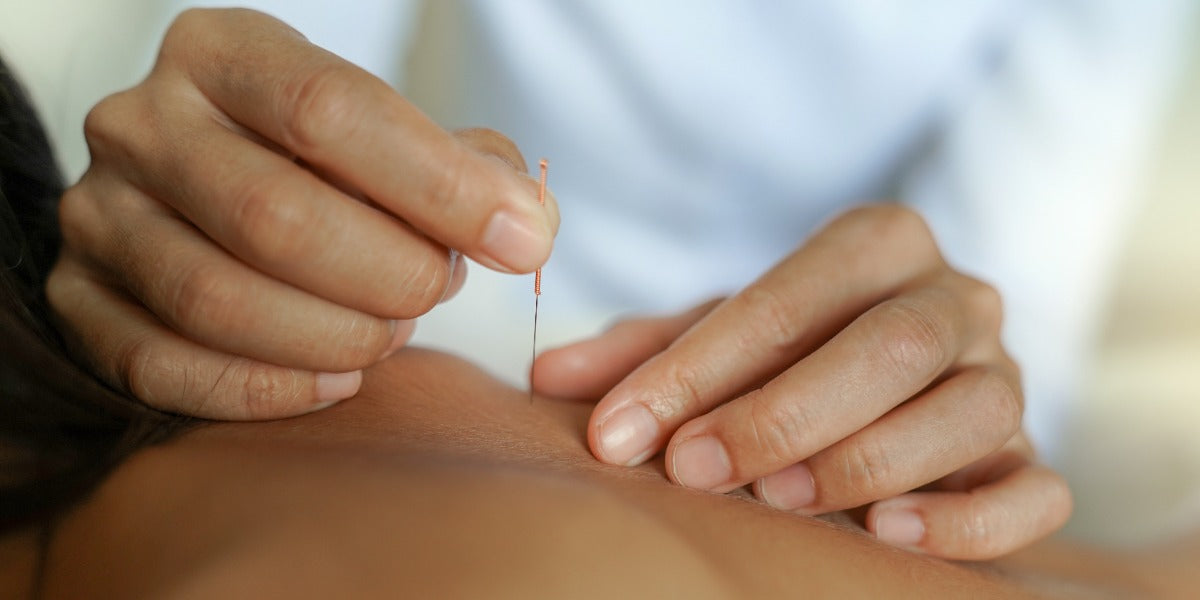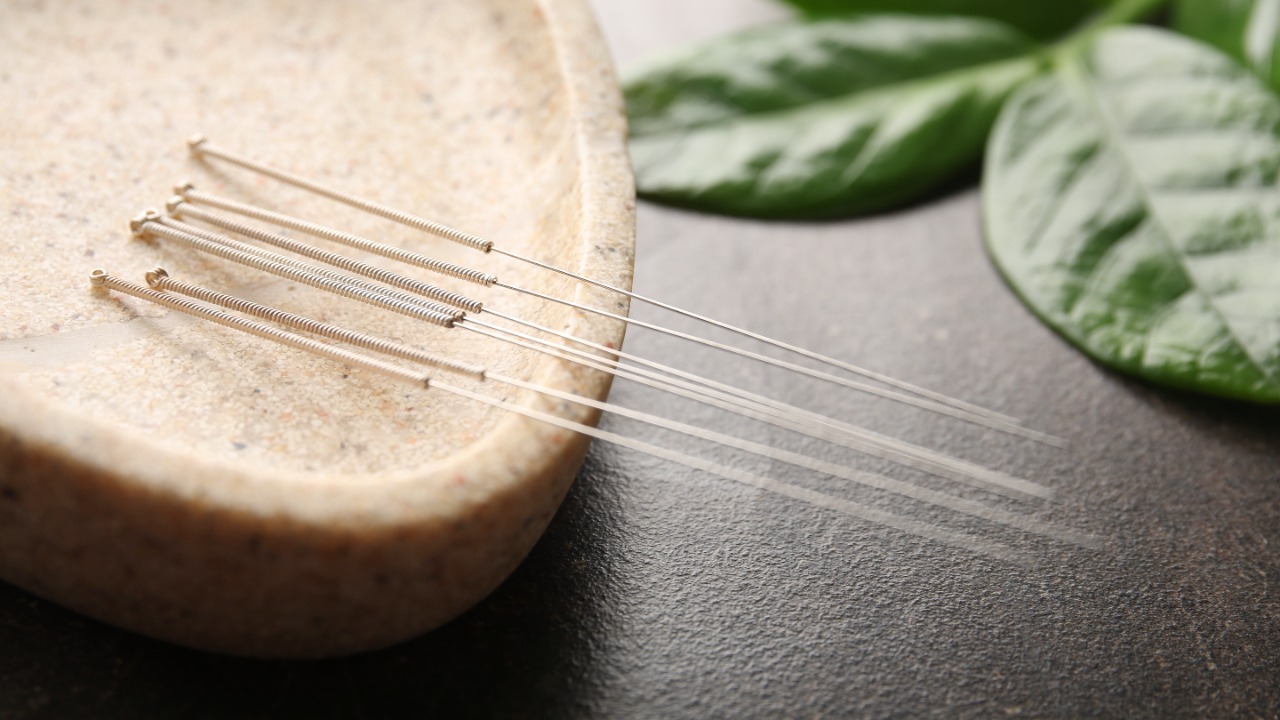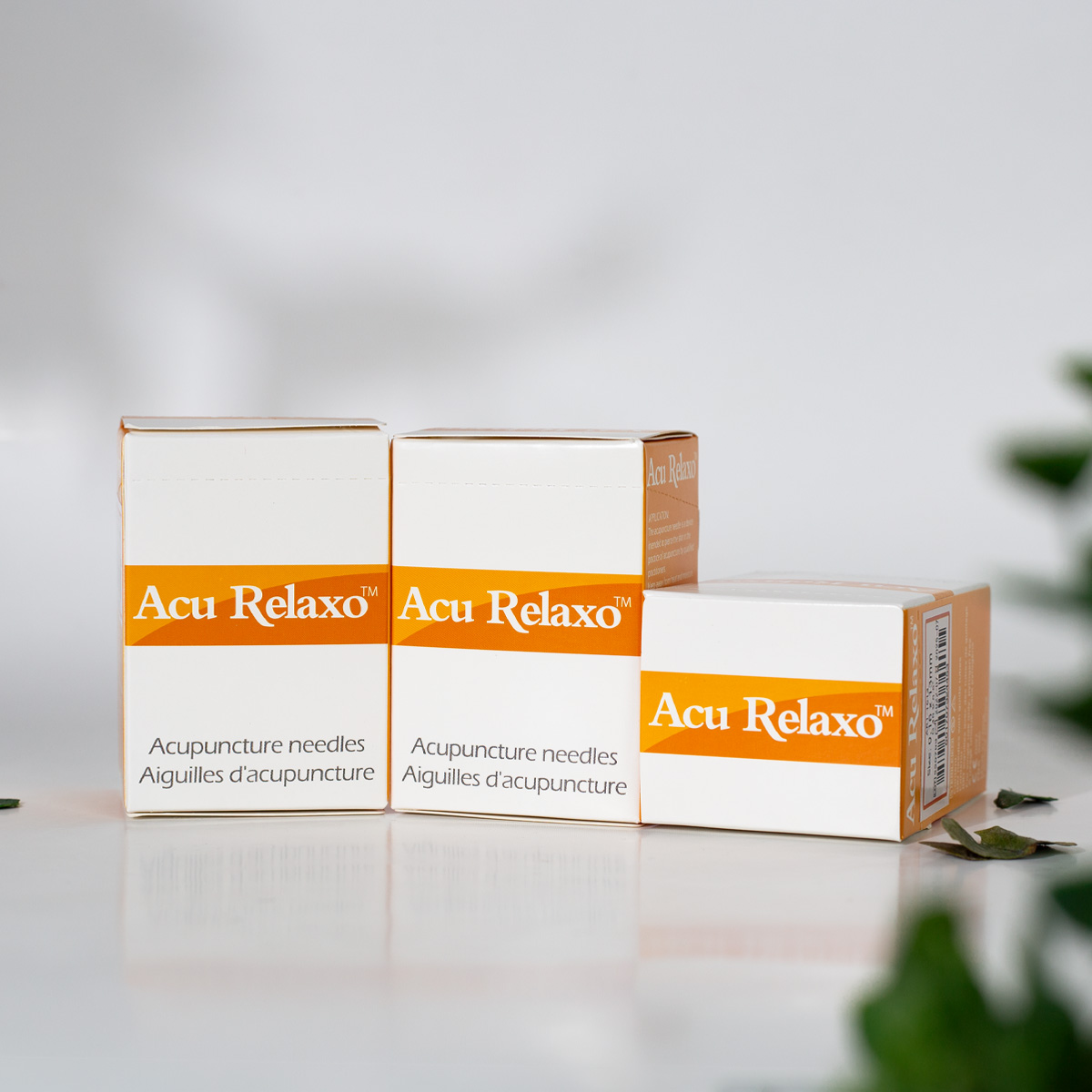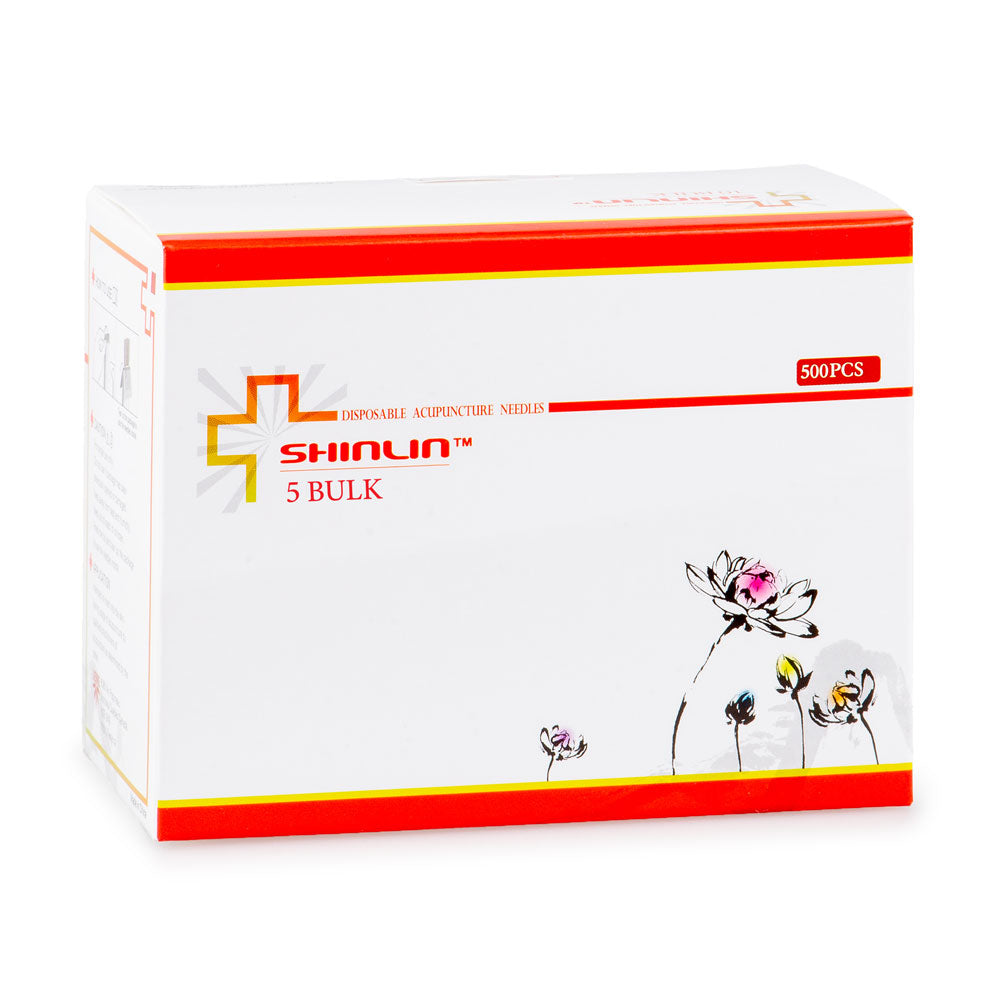Acupuncture and dry needling are two types of needling therapies that have gained popularity in recent years. Both practices involve the insertion of thin, sterile needles into specific points on the body to relieve pain and promote healing. Although the two techniques share some similarities, they also differ in terms of their principles, techniques, and clinical applications. In this article, we'll explore the differences between dry needling and acupuncture, as well as acupuncture needles for sale at Lierre’s 15th Anniversary this year.
What is Acupuncture?
Acupuncture is an ancient Chinese practice that has been used for thousands of years to promote healing and balance in the body. It involves the insertion of acupuncture needles into specific points on the body, called acupoints, to stimulate the body's natural healing response.
Acupuncture is based on the concept of Qi (pronounced "chee"), which is believed to be the body's vital energy or life force. According to TCM theory, when the Qi flow in the body is disrupted or imbalanced, it can lead to pain, illness, or other health problems
By inserting needles into specific acupuncture points, the acupuncturist aims to restore the proper flow and balance of Qi, promoting health and well-being. The acupuncture points are located along the meridians, which are believed to be pathways through which Qi flows. These points are selected based on the individual's symptoms, health condition, and the desired therapeutic effect. There are hundreds of acupuncture points on the body, each associated with different functions and organs.
During an acupuncture session, the acupuncturist will first assess the patient's condition through a comprehensive evaluation that may include asking questions, observing the patient, and examining the tongue and pulse. Then, they will insert thin, sterile needles into the selected acupuncture points. The needles are typically left in place for a specific duration, ranging from a few minutes to 30 minutes or more. The acupuncturist may also manipulate the needles by gently twirling or applying other techniques to enhance the therapeutic effect.
What is Dry Needling?
Dry needling is a modern technique that was developed in the 1940s by Dr. Janet Travell. It involves the insertion of thin needles into trigger points, or areas of tight muscle fibers, to relieve pain and tension. Dry needling is based on the concept of myofascial trigger points, which are believed to be areas of hyper-irritability in the muscle tissue. The term "dry needling" refers to the use of solid needles (without injecting any substances) to stimulate and treat muscular and connective tissue imbalances and pain. The goal of dry needling is to release muscle tension, alleviate pain, and restore normal function.
The insertion of the needle into these trigger points can elicit a local twitch response, which is a reflexive contraction of the muscle. This response is believed to help release muscle tension, improve blood flow, and promote healing. The therapist may manipulate the needles slightly or leave them in place for a specific duration, depending on the treatment approach. Dry needling is commonly used for musculoskeletal conditions, such as muscle pain, tension headaches, fibromyalgia, sports injuries, and chronic pain syndromes. It can be applied to various areas of the body, including the neck, shoulders, back, hips, and limbs.
During a dry needling session, a healthcare professional, such as a physical therapist, chiropractor, or osteopath, who has received specialized training in dry needling, will insert thin needles directly into areas of the body that are experiencing muscular tightness, pain, or dysfunction. These areas are often referred to as trigger points or myofascial trigger points, which are sensitive spots within a taut band of muscle fibers.
Similarities and Differences Between Acupuncture and Dry Needling
Acupuncture and dry needling are two therapeutic techniques that involve the insertion of thin needles into specific points on the body. While they share some similarities, they also have distinct differences.
Similarities
- Needle Insertion: Both acupuncture and dry needling involve the insertion of thin needles into the body. The needles used in both techniques are typically stainless steel and are designed to be as thin as possible to minimize discomfort.
- Targeted Points: Both acupuncture and dry needling target specific points on the body. These points are believed to be associated with the body's energy channels (acupuncture meridians) or trigger points (tender points in muscles or soft tissues). The selection of points is based on the individual's symptoms and the desired therapeutic effect.
- Therapeutic Benefits: Both techniques aim to alleviate pain and promote healing. They are used to address various musculoskeletal conditions such as muscle pain, joint pain, and certain neurological disorders. The specific benefits can include pain relief, improved blood circulation, muscle relaxation, and overall physical and mental well-being.
- Needling Techniques: Both acupuncture and dry needling involve the technique of inserting the needle into the body. However, the techniques differ in terms of the depth of needle insertion and the manipulation of the needles.
Differences
Despite these similarities, there are some key differences between acupuncture and dry needling:
- Principles: Acupuncture is based on the channel theory, which posits that disruptions in the flow of qi can cause imbalances in the body, leading to symptoms and illness. By stimulating acupoints along meridians or channels, balance can be restored and healing can be promoted. In contrast, dry needling is based on Western anatomy and neurophysiology and aims to relieve pain and tension by targeting trigger points or knots in muscles.
- Techniques: Acupuncture involves needle insertion at various depths and angles, often accompanied by other traditional Chinese medicine (TCM) therapies such as moxibustion and cupping. Dry needling, on the other hand, involves needle insertion directly into muscles.
- Evidence: Acupuncture has been developed and practiced for thousands of years, and there is significant research and evidence supporting its efficacy. Dry needling, on the other hand, is a more recent practice with limited research conducted on its effectiveness.
- Sensations: Acupuncture is generally not considered painful, while dry needling can be uncomfortable.
- Body areas: Acupuncture can be used on various parts of the body, including the face, ears, and limbs. Dry needling, however, is typically used on larger body parts such as the back and limbs and cannot be used on the face or ears.
- Needle sizes: Acupuncture needles range in size from 0.12mm to 0.4mm in diameter and 7mm to 75mm or more in length. Dry needling requires larger needles, typically ranging from 0.3mm to 0.4mm in diameter and 40mm to 75mm or more in length. For example, Acu Relaxo non-coated acupuncture needles size 0.3mm/75mm is ideal for use in both acupuncture and dry needling. This non-silicone coated needle shafts is the most suitable for clients who have silicone allergies.
- Clinical applications: Acupuncture is commonly used to treat a wide range of health conditions, including chronic pain, headaches, digestive disorders, and mental health issues. Dry needling, on the other hand, is primarily used to treat musculoskeletal pain and dysfunction, such as back pain, neck pain, and shoulder pain.
- Qualifications: Acupuncturists are required to have a license to practice and receive extensive training in identifying symptoms, diagnosing conditions, and using proper needle techniques. In contrast, dry needling practitioners are not required to have a license and often have minimal training before practicing.
Lierre’s Anniversary: Acupuncture Needles for Sale
Celebrate Lierre's 15th Anniversary Sale and take advantage of incredible savings on acupuncture needles. For a limited time, you can save up to 30% off on a wide selection of high-quality acupuncture needles. Whether you're an experienced acupuncturist or just starting your practice, this is the perfect opportunity to stock up on essential supplies and save big.
Our Best Sellers- Acu Relaxo Acupuncture Needles 100pcs/box: Introducing our best-selling product, the Acu-Relaxo Acupuncture Needles, now available at an unbeatable price during our 15th Anniversary Sale. With a remarkable 20% off, these acupuncture needles offer exceptional quality and performance that will elevate your practice to new heights. Crafted with precision and care, Acu-Relaxo needles provide unparalleled comfort and reliability for both practitioners and patients. Each needle is meticulously designed to ensure smooth insertion and minimal discomfort, making treatments a breeze. Made of premium Japanese surgical stainless steel, the needles are packed in an individually sealed blister, and each needle comes with an insertion tube. Don't miss out on this exclusive offer to enhance your acupuncture practice while enjoying significant savings.
- ShinLin™ 10 Bulk Acupuncture Needles 1000/box: Discover our ultimate best seller, the Shinlin 10 Bulk Acupuncture Needles, now available at an incredible price during our 15th Anniversary Sale. Take advantage of the exclusive 20% discount and experience the perfect combination of quality and affordability. These top-notch acupuncture needles are meticulously designed for precision and comfort, ensuring smooth and painless insertions. Packaged in convenient bulk quantities, they are the ideal choice for bustling practitioners and clinics. With their premium Japanese stainless steel construction, 20-25mm spring handles (length varies based on needle size), and a micro-layer of medical silicone coating on the needle shaft, manipulating ShinLin needles becomes effortless and efficient. Whether you're a seasoned professional or a dedicated student, the Shinlin 10 Bulk Needles will meet your expectations.
Our Best Deal
- ShinLin™ 5 Bulk Acupuncture Needles 500pcs/box: The new package ShinLin 5 Bulk Acupuncture Needles is now available at an unbeatable price during our Best Deals promotion with an incredible 30% discount. These acupuncture needles exemplify the perfect blend of quality and affordability, making them an essential choice for practitioners. With their precision-engineered design, Shinlin 5 Bulk Needles ensure seamless and gentle insertions, providing optimal comfort for patients.
In conclusion, it's essential to consult with a qualified healthcare professional to determine which approach is most appropriate for your individual needs and health concerns. Dry needling is usually considered safe if the practitioner uses sterile needles, but there are still risks associated with the practice. These risks include temporary soreness at insertion sites, bleeding, and bruising at or around the sites. Therefore, it's crucial to use high-quality needles. Such as the acupuncture needles offered by Lierre.ca, with diameters of 0.3mm and 0.4mm and lengths of 40mm, 50mm, 60mm, and 75mm. They are the perfect needle sizes for use in dry needling. Don't miss out on this exclusive opportunity to enhance your acupuncture practice while enjoying substantial savings. Visit our website at Lierre.ca and seize this phenomenal deal on our Anniversary Sale 2023.






